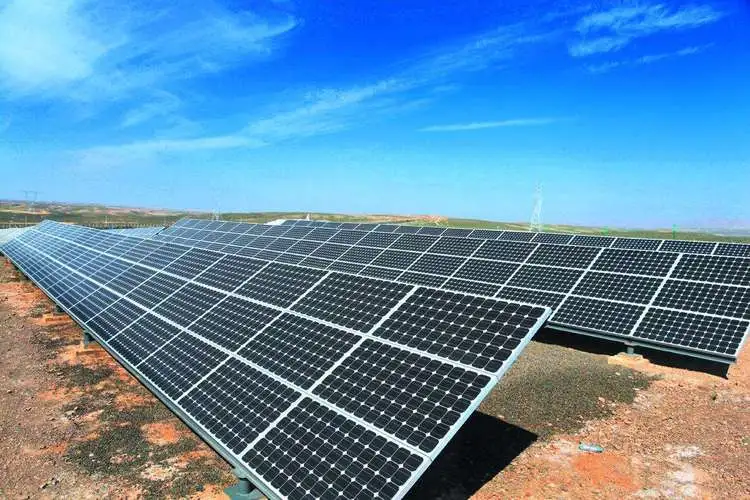
Harnessing the sun’s power to charge LiFePO4 batteries is one of the smartest and most sustainable ways to store clean energy. Whether you’re setting up an off-grid solar system, powering a camper van, or building a renewable energy solution for your home, solar charging LiFePO4 batteries combines efficiency, reliability, and eco-friendliness.
In this article, we’ll explore the benefits, key considerations, and a step-by-step guide to charging LiFePO4 batteries using solar power — helping you design a system that’s both effective and long-lasting.
LiFePO4 (Lithium Iron Phosphate) batteries are a type of lithium-ion battery known for their high energy density, exceptional cycle life, and superior safety. Compared to traditional lead-acid batteries, LiFePO4 batteries deliver:
Faster charging speeds
Higher discharge efficiency
Longer lifespan (often over 3000–5000 cycles)
Enhanced thermal and chemical stability
These qualities make LiFePO4 batteries ideal for solar energy storage, off-grid systems, RVs, marine applications, and electric vehicles.
Solar power is a clean, renewable energy source. Pairing it with LiFePO4 batteries minimizes your carbon footprint while reducing reliance on fossil fuels or grid-based electricity.
Once installed, solar energy is free. Using sunlight to charge your LiFePO4 batteries means lower electricity bills and greater long-term savings, especially in high-energy-demand systems.
Solar-charged LiFePO4 systems allow you to go completely off-grid. Perfect for remote areas, boats, or emergency backup systems, this setup ensures a continuous power supply even during blackouts.
LiFePO4 batteries perform best with steady, controlled charging — exactly what a well-regulated solar system provides. Proper solar charging reduces stress on the cells and extends overall lifespan.
To achieve optimal performance and safety, consider the following factors before setting up your system:
Choose panels that match your battery bank’s voltage and wattage requirements. Oversized or undersized panels can lead to inefficient charging or even damage the system.
Tip: For a 12V LiFePO4 battery, a solar panel with a voltage output of 18–20V is typically ideal.
A solar charge controller regulates current flow from solar panels to the batteries.
Select one designed specifically for LiFePO4 batteries, supporting the correct charging parameters and features like:
Overcharge protection
Temperature compensation
Load control
MPPT controllers are recommended for their superior efficiency over PWM controllers.
Determine your total energy needs and configure your batteries in series or parallel to achieve the desired voltage and capacity.
For instance, connecting four 12V LiFePO4 batteries in series creates a 48V system suitable for larger setups.
Your system’s total charging efficiency depends on:
Solar panel conversion rate
Charge controller efficiency
Cable thickness and connection quality
Optimize each component to minimize power losses and maximize charge retention.
Follow this easy, step-by-step process to safely and efficiently charge your LiFePO4 batteries:
List all devices you’ll power and their watt-hour usage to determine total daily energy demand. This helps you size your battery bank and solar array properly.
Use your energy needs and sunlight availability to calculate the necessary solar capacity. Account for seasonal variations and potential shading.
Choose an MPPT charge controller designed for LiFePO4 chemistry. Ensure its current rating exceeds your solar panel’s maximum output to prevent overload.
Mount the panels in an area that receives maximum sunlight exposure — typically facing south (in the Northern Hemisphere) at an optimal tilt angle.
Use appropriately sized wires to connect panels to the controller, ensuring correct polarity and secure, corrosion-resistant connections.
Attach the batteries to the charge controller, following manufacturer wiring diagrams. Verify all terminals are tight and polarity is correct.
Check voltage, current, and charging progress via your controller’s display or mobile app. Regular monitoring helps detect irregularities early.
Clean solar panels regularly.
Inspect connections for corrosion.
Periodically check battery voltage and temperature.
A well-maintained system ensures maximum power generation and longevity.
LiFePO4 batteries can degrade if charged beyond their upper voltage limit. Use a controller with overcharge protection and always adhere to manufacturer voltage recommendations (typically 14.2V–14.6V for a 12V battery).
Stick to recommended C-rates (charging and discharging rates). Avoid deep discharges and maintain the state of charge (SOC) between 20%–90% for maximum lifespan.
LiFePO4 batteries should ideally charge between 0°C and 45°C (32°F–113°F). In cold climates, use battery heaters or insulated enclosures to prevent low-temperature charging damage.
Consistent inspection prevents potential failures. Keep cables tight, clean solar panels, and ensure your charge controller firmware is up to date.
Charging LiFePO4 batteries with solar energy is an eco-smart choice that delivers efficiency, cost savings, and energy independence.
By following the setup steps and best practices outlined above, you can create a reliable solar charging system that maximizes battery performance and minimizes maintenance.
LiFePO4 + Solar = A cleaner, smarter, and more sustainable power solution.
1. Can I use regular solar panels to charge LiFePO4 batteries?
Yes. Standard solar panels work perfectly, provided you use a compatible charge controller and ensure voltage and current match your battery system.
2. How long does it take to charge a LiFePO4 battery with solar?
Charging time depends on sunlight, panel size, and battery capacity. On average, it takes 5–8 hours of full sun to fully charge a 12V 100Ah battery.
3. Can a LiFePO4 charger be used for other battery types?
No. LiFePO4 chargers are optimized for their unique voltage and charge profile and may damage other battery chemistries.
4. Is it safe to leave LiFePO4 batteries connected to solar panels?
Yes — as long as a charge controller is in place to prevent overcharging. Always monitor your setup for safety.
5. Are LiFePO4 batteries good for off-grid solar systems?
Absolutely. Their high efficiency, long cycle life, and deep discharge capability make LiFePO4 batteries one of the best choices for off-grid and hybrid solar systems.
Next:LiFePO4 vs AGM Battery: Which Is Better for Your Power Needs?
Previous:EVE Energy Partners with CommVOLT on 500MWh European Energy Storage Deal
Contact Person: Miss. Elsa Liu
| WhatsApp : | +8617763274209 |
|---|---|
| Skype : | +8617763274209 |
| WeChat : | 17763274209 |
| Email : | Elsa@lifepo4-battery.com |